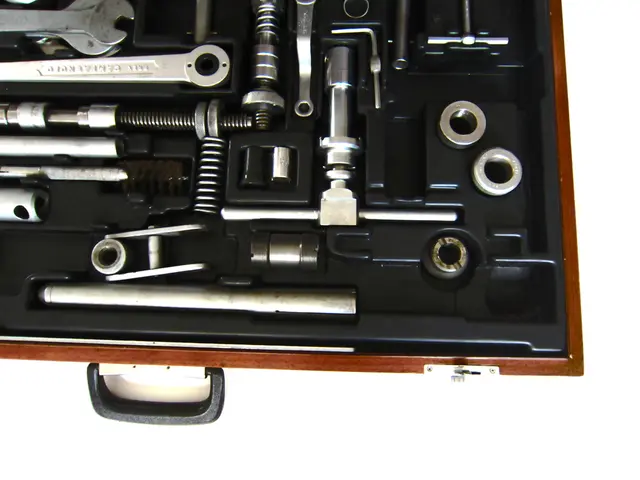Unraveling the Scenario: Examining the Current Situation
The High-Price Tag on Simplicity: A Modern Perspective on Industrial Design in Russia
Industrial design isn't just a fancy wrapper; it's the governing principle behind a product's technical and constructive features, ensuring it's convenient, purposeful, ergonomic, economical, and competitive. Once a neglected concept in the Soviet Union, today it stands as a vital tool for competition and competitiveness in a capitalist economy.
During the USSR era, the goal was "simple production, cheap sales, mass for the masses." In today's market, the motto rings as "low production cost, high sale prices, targeting the affluent."
Sergei Smirnov, founder of Smirnov Design, highlights the shift: "In the Soviet system, there was a planned economy without competition. But industrial design serves as a competitive edge. People envied Western goods in the Soviet Union, which were designed to be the best. There was no true motivation for design in the Soviet era, although the VNIITE institute of technical aesthetics was operational, conducting research in ergonomics and design."
In contrast, Dmitry Mareev, head of FORMA Industrial Design, argues that "the fundamental change is just a difference in how demand is managed, from scarcity to pricing."
Businesses aim to generate profits, and designers work within the client's technical specifications, but adapting to production capabilities and strict GOST standards can be challenging. However, designers prioritize the end-user, ensuring the product is comfortable, functional, and ergonomic, as people are willing to pay 15% more for such goods.
Small companies may not prioritize industrial design due to cost or preference, but larger firms understand its value as a competitive advantage, accelerating growth by at least two times.
The Designer's Evolution
Good designers not only understand innovative materials but also recognize societal demand, understanding when solutions become obsolete. For example, carbon fiber, once groundbreaking in the music, medical, and sports industries, is no longer surprising in today's market.
In the early 2020s, many Russian designers collaborated with foreign design studios. However, Western clients have largely left Russian firms due to payment difficulties, high reputational risks, and minimal legal protection of deals.
Today, South Korean designers lead the international scene, with the Chinese quickly catching up, investing significantly in transport, industrial, and other design sectors.
A Tug of War Between Ideas and Execution
In contrast to Western designers, who are meticulous translators of ideas into production language, Russian designers aggressively impose their views. According to Alexey Karfidov, Russian designers are stronger in terms of construction and technology but may lack quality in material presentation.
European designers can argue, but they often employ diplomatic phrasing. Meanwhile, Russian designers argue forcefully.
"The true value of a good product designer in our region is the ability to find an optimal compromise between numerous factors, including cost, usability, safety, trend compliance, repairability, good proportions, and create a product that satisfies most requests, brings joy to users, and generates profit for the manufacturer," explains Dmitry Mareev.
In Italy, Germany, and Scandinavia, industrial design is an integral part of the production process. Designers work from the early stages of planning and product development. In Russia, this approach is less common. The potential benefits are not always clear to the average Russian client, who still views design as mere decoration or an optional add-on.
The Priceless Value of an Idea
A designer's work includes design concept, internal element construction, material selection, sketching and drafting, and 3D modeling. All these are considered intellectual property, and designers own the copyrights, although exclusive rights can be transferred to others. The law is more flexible today than in the USSR.
Ideas are valuable, but their true worth lies in their implementation and growth throughout the production process. The idea to create a "phone without buttons" or iPhone wasn't significant on its own, but the value lies in the many stages that followed: selecting components, researching user experience, and testing prototypes.
From Dreamers to Realists
Even the most brilliant designer is not obligated to be the originator of ideas. Designers generate ideas based on those provided by entrepreneurs and corporations, and the design is born from those seeds. Designers engage in dull work, such as forming presentations, compiling reports, creating 3D models, communicating with engineers, and consulting with constructors.
The true value lies in solving business tasks, requiring designers to be multidisciplinary, combining technology, engineering, aesthetics, analytics, and science. Clients dream of a "Swiss Army knife" who can ideate, model, visualize, select materials, create presentations, and present them beautifully.
The Career Path of a Designer
Industrial design is an increasingly popular profession among youth, but universities struggle to adapt their educational programs to the fast-changing market demands. Employers often lack a clear understanding of what an industrial designer should do, leading to disagreements over competencies.
Everyone wants the best talent at the lowest salary, while universities want prestigious rankings with the least effort, teachers want reduced bureaucratic workload and high salaries, and students want easy learning and guaranteed placements in leading global companies. For change, long-term investment is required.
According to the hh.ru platform, while the number of industrial designer vacancies increased by 31% from January to June, the number of active resumes grew less than 7%. Compared to 2022, average salaries increased by a quarter to 80,000 rubles, but this is still not enough to fill vacancies.
Universities cannot often prepare top-notch specialists due to the mismatch between educational standards and the needs of the real sector. Unions like Stieglitz Academy in St. Petersburg, the Ural State Academy of Architecture and Arts, and the Stroganov Academy's strong furniture department are exceptions, as they create good education programs.
To learn more about the latest trends in industrial design, follow our Telegram channel at @expert_mag
- In today's market, the focus on design has shifted from "simple production, cheap sales, mass for the masses" to "low production cost, high sale prices, targeting the affluent".
- Good designers understand both innovative materials and societal demand, ensuring they create products that are functional, ergonomic, and competitive in the global market.
- The career path of an industrial designer requires a multidisciplinary approach, combining technology, engineering, aesthetics, analytics, and science to solve business tasks and generate profits for clients.








